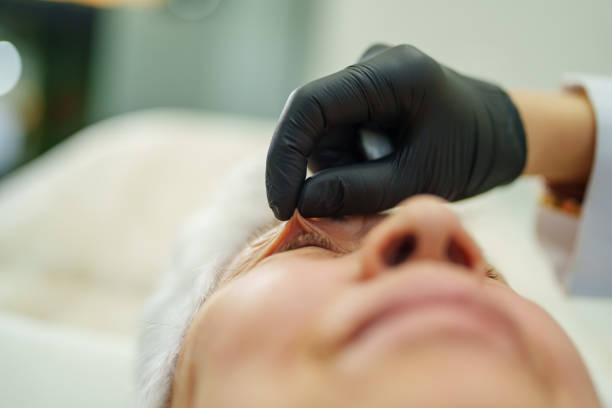Eyelid surgery, also known as blepharoplasty, is a popular cosmetic procedure designed to rejuvenate the appearance of the eyes by removing excess skin, fat, and sometimes muscle. As with any surgical intervention, concerns about scarring are common among prospective patients. When considering Eyelid Surgery in Abu Dhabi, understanding the potential for visible scars is crucial for making an informed decision. Patients often ask whether eyelid surgery leaves noticeable scars and what factors influence their visibility. In this comprehensive guide, we will explore the nature of scars post-surgery, the techniques used to minimize their appearance, and how individual factors can affect healing outcomes.
Understanding the Nature of Scars After Eyelid Surgery
How Scars Form After Surgery
Surgical scars are the body’s natural response to skin injury. During eyelid surgery, incisions are carefully planned and placed to optimize healing and concealment. The formation of scars involves the body’s process of repairing tissue, which results in collagen deposition and tissue remodeling. The final appearance of scars depends on multiple factors, including incision placement, skin type, and individual healing tendencies.
Typical Scar Placement in Eyelid Surgery
In blepharoplasty, incisions are generally made within the natural creases of the eyelids or along the lash line. This strategic placement helps to conceal scars within existing skin folds, making them less noticeable over time. For upper eyelid procedures, incisions are often hidden in the eyelid crease, while lower eyelid incisions are made just below the lash line or inside the eyelid (transconjunctival approach). The careful planning of incision lines is central to achieving minimal visible scarring.
Factors Influencing Scar Visibility
Surgical Technique and Skill
The skill and precision of the surgeon play a pivotal role in minimizing scar visibility. Experienced surgeons use meticulous incision techniques and suturing methods to promote optimal healing. Well-placed incisions and proper tissue handling reduce trauma and irregularities, leading to less prominent scars.
Skin Type and Healing Tendencies
Individuals with different skin types heal differently. Factors such as skin thickness, elasticity, and pigmentation influence scar appearance. For example, people with darker skin tones may be more prone to developing hyperpigmentation or hypertrophic scars, which can be more noticeable. Conversely, those with lighter skin tones may experience less visible scarring but can still develop noticeable marks if healing is not optimal.
Postoperative Care
Adherence to postoperative instructions significantly impacts scar healing. Proper wound care, avoiding excessive sun exposure, and refraining from activities that strain the healing tissues promote better scar maturation. Using recommended topical treatments or silicone gels can also help improve scar appearance over time.
Individual Healing Response
Genetics and overall health influence how scars develop. Some individuals are predisposed to forming keloids or hypertrophic scars, which are raised and more noticeable. Others may experience minimal scarring due to their body’s natural healing process. Maintaining a healthy lifestyle, including proper nutrition and avoiding smoking, can support optimal healing.
Techniques to Minimize Scarring
Incision Placement and Design
Surgeons carefully plan incisions along natural skin creases to hide scars. In upper eyelid surgeries, incisions within the eyelid crease are virtually invisible once healed. For lower eyelids, incisions just below the lash line can be concealed within natural skin folds or along the inside of the eyelid, reducing visible scarring.
Precision Suturing and Closure
Using fine sutures and meticulous stitching techniques ensures proper wound closure. This careful approach reduces tension on the skin and promotes smooth healing, leading to less conspicuous scars. Some surgeons may employ dissolvable sutures or skin adhesives to further enhance aesthetic outcomes.
Postoperative Scar Management
Applying silicone gels or sheets, gentle massage, and protecting scars from sunlight are standard practices to optimize healing. These methods can help flatten and soften scars, making them less noticeable over time. Regular follow-up appointments allow the surgeon to monitor healing and address any concerns promptly.
Healing Timeline and Scar Maturation
Immediate Postoperative Period
In the initial days after surgery, swelling, bruising, and redness are common. Incisions may appear red or pink, but this is part of the normal healing process. Proper wound care during this stage is essential to prevent infection and promote healthy scar formation.
Short to Medium Term (Weeks to Months)
As healing progresses, scars gradually fade. In the first few months, scars may appear raised or darker but typically become flatter and less pigmented over time. Consistent postoperative care and protection from UV rays facilitate optimal scar maturation.
Long-Term Outcomes (Months to Years)
Over time, scars tend to become less noticeable, blending seamlessly with surrounding skin. The final appearance can take up to a year, depending on individual healing factors. Most patients find that scars are well-concealed within natural creases, especially when the procedure is performed by an experienced surgeon.
Addressing Patient Concerns About Scarring
Setting Realistic Expectations
Patients should understand that while modern techniques aim to minimize visible scarring, individual healing responses vary. Transparent communication with the surgeon about expectations and potential outcomes helps reduce anxiety and fosters satisfaction.
The Role of Follow-Up Care
Adherence to postoperative instructions and attending scheduled follow-ups are vital for monitoring healing progress. Early intervention in case of any abnormal scarring or wound healing issues can improve the final aesthetic result.
Final Thoughts
In conclusion, Eyelid Surgery Abu Dhabi and elsewhere, when performed by skilled surgeons, generally results in minimal and well-concealed scars. The careful planning of incision lines within natural creases, combined with advanced surgical techniques and attentive postoperative care, significantly reduces the likelihood of noticeable scarring. While individual factors such as skin type and healing response can influence outcomes, most patients experience results that align with their aesthetic goals, with scars that fade seamlessly into the natural contours of the eyelids.







0 Comments